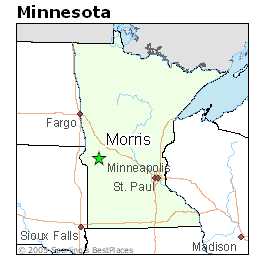A while back I wrote about "The Imperfectionists," a novel that encapsulates (memorializes?) the newspaper industry as we once knew it. Consider it a time capsule. The ink-on-paper media are racing into obsolescence.
It won't disappear, and people will always have an appetite for journalism, but that's not the point. The business model is dying.
Now there's a documentary in the works on the topic. It's called "Fit to Print" and it's being put together by two young filmmakers: Adam Chadwick and Bill Loerch. The documentary is being assembled through the course of this year.
Chadwick and Loerch have identified three perspectives, that of a publisher (presumably an autonomous publisher and not just manager of a branch), a reporter, and a journalism school graduate. A website detailing the Chadwick/Loerch project gives all the background on the tumbling fortunes of the "dead tree" media.
News on paper will never disappear. As one media writer put it: "The print media will survive for as long as there's a 'print' button on your computer."
But what is rapidly dying is the monopolistic print media that was once infused with such a sense of entitlement.
The erosion began slowly and with the inhabitants of the old system in denial. Much has been written about that. Eventually the numbers ruled. The online world advanced first with a crawl. Then, with the advent of Web 2.0, it was an invigorated sprint..
It has been good news for society as a whole. But as with any industry forced into rapid retrenchment, there is a painful human toll, because the old system did support a lot of people.
It's that human toll that "Fit to Print" will largely focus on. The title of the documentary is a takeoff on the New York Times slogan "All the news that's fit to print."
The slogan has been a target for parody through the years, such as what a college instructor of mine shared: "All the news that fits."
The instructor, J. Brent Norlem - a real character in the tradition of newspapering - was just looking for a little humor. But of course the finite space in any newspaper is an issue that doesn't really show them in a good light.
Norlem taught at St. Cloud State University. One of my classmates went on to become publisher of "Minnesota Moments" magazine. Another is now publisher of the Western Guard newspaper in Madison, MN.
I'm sure others went on to find considerable success and/or fame. Me? I was privileged to have a 26-year career in the community press. It was right here in Motown, during what I would call the heyday of our Morris newspaper.
Back when our Morris paper was twice a week, I would estimate the average number of pages of newspaper product they gave us per week was 38. Now as a weekly, it seems to hover around 22. I'm not including special sections.
The page size has gone through creeping reductions ever since the paper was acquired by non-local interests. Sources tell me the page width was shaved again recently. I don't bother to document all that because I have better things to do with my time, like being a new media writer.
You can still slap a paper together no matter how big (or small) it is. The owners really don't care about the "news." What they get on their knees and pray over is whether the advertising revenue will keep rolling in.
They don't even care that much if you plunk down your dollar and buy a paper. The cost of printing and distribution is substantial. The fixed costs are becoming a millstone around their neck. Their obsession is over advertising revenue and how it can be maximized, or preserved, or whether the retreat can just be slowed down.
Advertisers aren't motivated by wanting to subsidize newspapers. They'll buy ads for as long as it serves their interests. Businesses of all stripes have seized the amazing frontier of the Internet - who hasn't? - to target their message in more precise and economical ways.
They should be jumping up and clicking their heels (and probably are).
But for the people who once gravitated to the newspaper industry as a means of employment, this transformation in our culture has been harrowing.
At one point us print types (my former identity) felt stunned and then defensive. But the numbers rule. And ultimately we had to concede to that massive wave of change.
Thousands of jobs have been wiped out. Over 100 newspapers shut down in 2009. The newspaper business lost $7.5 billion in ad revenues in 2008.
At the same time, the industry has reduced spending on journalism by $1.6 billion per year over the past several years.
The background being cited here is from the "Fit to Print" website. There are many other web sources from which to learn this.
The "Fit to Print" site asks: "What does this mean for the individuals whose lives have been turned upside down by the crisis?"
Continuing: "Decline has spurred debate about what comes next and how to adapt journalism to a world in which the digital world is replacing the printed word. But such stories are usually abstractions.
"Newspapers are a business, they are crucial to the functioning of a democratic society, but they are often more than that. They are a way of life for those who are a part of them - ordinary individuals contending with turbulent times."
I think most of us don't pause to think how much our whole culture has changed since online came along. It's human nature to focus on the present. That's understandable. But to get perspective, try to remember when simply "typing" was considered a godawful chore by nearly everyone.
First there were manual typewriters and then electric ones, but the latter weren't that much of an improvement.
We saw the invention of "white out." Hey, wasn't Michael Nesmith's mother the inventor of that? (Nesmith was one of "The Monkees" on TV in the 1960s.)
No amount of innovation or tweaks could make the old method of typing pleasant.
The old newsrooms were filled with the piercing clatter of typewriters which created a real air of "something important" happening - news being generated. It was a frenetic atmosphere.
I entered the newspaper business right at the end of the manual typewriter era. You didn't make changes in copy by "selecting" something and typing something new in (as with our computers now).
Typically a story would get ripped out of the typewriter and then the writer or editor would whip out a good ol' ballpoint pen. By the time the process was done, in many cases you might as well have just started out with the pen!
The story on paper as ripped out of the typewriter could turn out looking like the quintessential mess. There was no better way. I think we took a perverse sort of pride in that.
"Hey, look what we go through to get the story out." (Implied: Who else in their right mind would do this?)
Newspaper writing was like an odd stepchild within the writing craft. But it was a craft that fit the work to be done. It definitely got done, with a typo here and there and perhaps a brewsky hoisted up at the end of the day.
"Fit to Print" will seek to capture the craft as it was. "The Imperfectionists" novel already has.
I remember the first time seeing a users' manual for a Macintosh (word processor) and right away reading: "The Macintosh is not a typewriter." How absolutely true.
I felt like I was looking at a robot from "Star Wars."
The typewriter can be filed away with horse and buggy travel.
But the speed of change began overwhelming a lot of us. Negative scanners (for photographic negatives) meant negatives could go through a new tech process, and no prints needed to be made. Darkrooms were nixed.
But in a flash even that new system became obsolete! Digital cameras came along and improved by leaps and bounds. Faxing, which once seemed almost like magic (as in the movie "Almost Famous" when it was very primitive), was pushed aside by electronic mail..
I remember making frequent trips to the fax machine at the Morris newspaper office and finding a pile of travel deals to the Bahamas. Spam of the fax world! It seemed like 90 percent of the faxes we received were unnecessary or superfluous. It certainly wasn't a step toward "paperless."
Digital cameras seem like a godsend but I became worried that they weren't really a boon for the newspaper industry. But how could they not be? Let me elaborate: Their very ease of operation and economy just made them more accessible for the broad public (what that BP Amoco official would call "the small people").
Taken together, all the tech inroads which seemed to make our lives easier at the paper, were really just empowering people on the outside who could ultimately do an end run around newspapers! Got it?
That's exactly what is happening. Newspapers should have been thankful when they were dependent on costly and cumbersome processes that no one in his right mind would want to employ on an amateur basis.
Just like typing was once anything but "fun."
Now all these communications tasks are fun and economical (free in many cases). I remember telling a former Morris mayor that local government could end up putting all its legal notices online and it wouldn't cost anything - a real boon compared to the cost of paying the newspaper to publish it.
He realized it would be cheaper but he said "oh, it would cost something."
Oh no it wouldn't.
Finding an audience is child's play. And you're not limited by a finite number of pages to fill.
"All the news that's fit to print" is such a quaint slogan.
The "Fit to Print" documentary is another step in making sure we realize the magnitude of the changes and the huge effect on people who once made a living in the old model, like me.
-Brian Williams - morris mn Minnesota - bwilly73@yahoo.com
Sunday, July 18, 2010
Subscribe to:
Post Comments (Atom)






















No comments:
Post a Comment